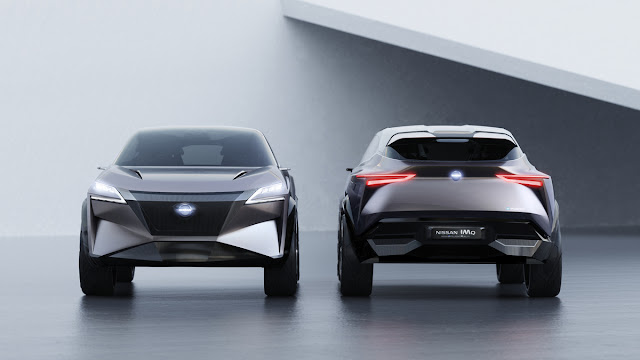Nissan IMQ's dimensions place it at the center of the European Crossover segment. It combines clean and effortless design by combining exterior and interior.
This is the most striking in the lines of the greenhouse, designed to give the impression of a single continuous surface.
IMQ points to a whole new direction in Nissan's design language. It is built on the Nissan badge, which is integrated into the V-motion grid, which is deliberately finer. The grid is vertically mixed into the hood and horizontally with the front bumper to create strong corners on the outer edges. The hood has striking chrome-edged cuts while the fender is raised from the wheel arches and trapped beneath the central section.
At the back, a vertical line line from the light cluster helps aerodynamic performance as the air moves sideways. At the top, it is integrated into a new thin line interpretation of Nissan's "boomerang" lamp set. The one-piece tailgate is hidden under the rear fenders and reflects the design of the bonnet.
A close look reveals that three-dimensional ridges are used extensively in the thickened lower parts of the exterior. These elaborate layers - known as lamellae - resemble Japanese traditional design and are spread all over the vehicle.
The exterior was finished with 22-inch alloy wheels with tailor-made Bridgestone Connect tires. These "smart" tires transmit information to the driver through the graphical user interface. Transferred data include tire load, pressure, temperature, grip level, wear and tire health. This helps IMQ calibrate the in-car control systems automatically to work optimally.
Japanese design themes blended with contemporary technology continue in-house. The doors of the IMQ are hinged to the outer edges and opened to reveal a futuristic, large interior, and there are four separate seats, perfectly rising from the lamella-covered floor that provides an external visual connection.









No comments:
Write yorumComments